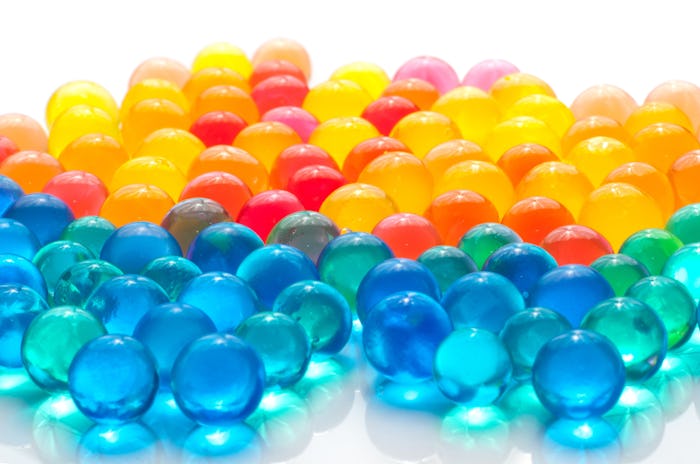Life

Here's How Water Beads Can Help With Sensory Processing Disorder
Water beads are quickly becoming a favorite playtime activity for children. They're colorful little gel balls that expand when placed in water, and become a slippery, squishy, and super fun activity for little kids. The beads are rapidly becoming a popular toy used in sensory integration therapy, too. So how do water beads help with sensory processing disorder?
First, it is important to understand what sensory processing disorder is. According to the STAR Institute for Sensory Processing Disorder, sensory processing disorder (SPD) is when sensory signals are not detected or don't get organized into appropriate responses. Some people with SPD can over-respond to touch sensations and find them highly uncomfortable, while others with SPD may under-respond to the same sensations by not feeling a thing. Brain Balance Achievement Centers explained that children with SPD can be so severely affected by their sensory reactions that it can interfere with their normal everyday functions.
According to Understood, sensory integration therapy helps kids by providing them with structured and repetitive sensory stimulation so that their brains will eventually adapt and allow kids to process and react to sensations more efficiently. Using water beads in sensory play can be beneficial because they can provide a soothing physical experience due to their slippery and squishy feel. Little Bins for Little Hands noted that water beads provide a unique sensory play experience along with simple learning activities such as counting and learning colors.
In an interview with Romper, Judith Zenna-Valgento, PhD, the campus director of the Brightmont Academy in Phoenix, Arizona, explains that the beads offer texture and resistance in a warm, moist environment.
"They can be integrated into science, mathematical, and artistic applications, which engages students with a wide variety of interests. In a home application, they can provide a relaxing learning and play experience, encouraging the child to self soothe in an adaptive manner," says Zenna-Valgento.
As beneficial and fun as they can be, there are safety precautions that must be followed when using water beads for playtime. According to the American Academy of Pediatrics, water beads can be harmful if swallowed or put in an ear. The beads can swell up inside and cause internal obstructions, which could lead to more critical health issues. You can make edible water beads from Tapioca Pearls, as explained by Growing a Jeweled Rose, which can be used as a safe alternative if your child has the tendency to eat their toys. As long as you take the correct precautions, water beads can provide hours of squishy and colorful sensory play.